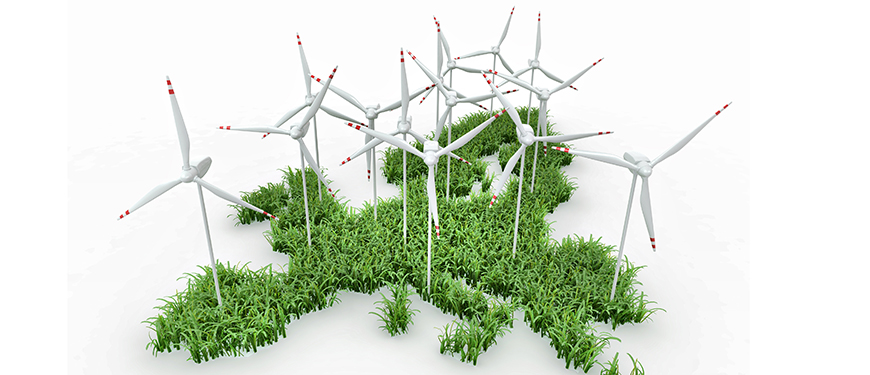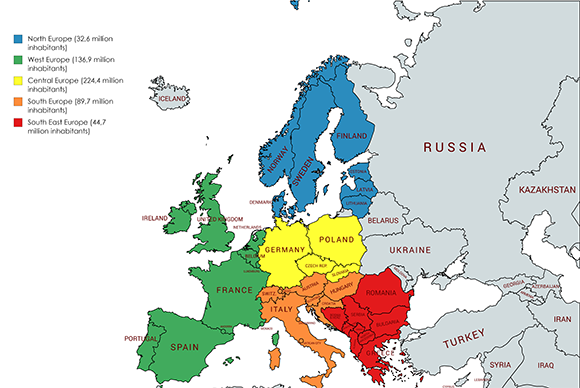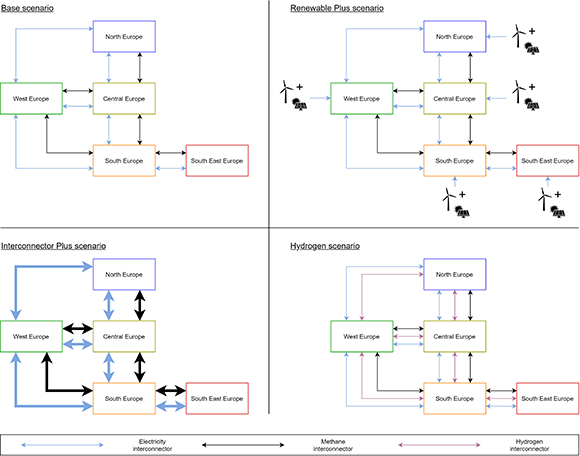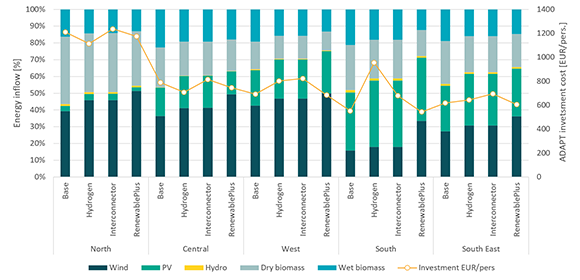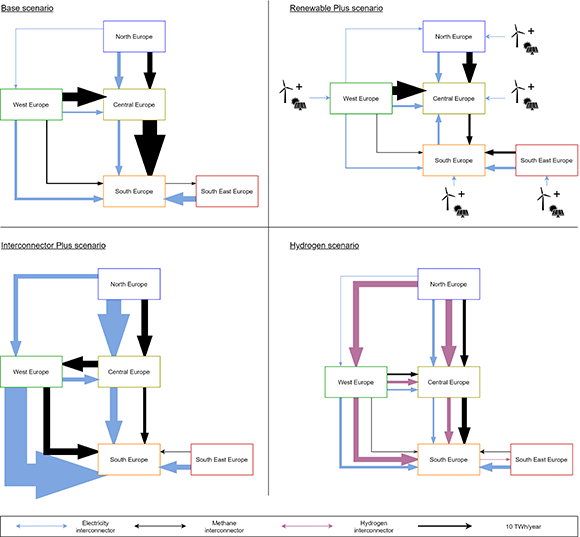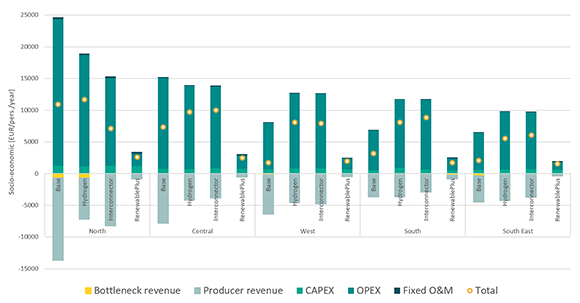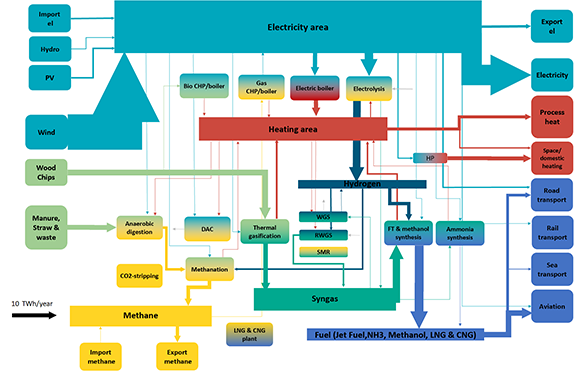Camilla Juel Gammelby
Master Thesis - Energy Technology - 2020
Lowering impacts related to climate change have become a global challenge. With an increase in scarcity of resources and rising temperatures, the need for renewable and sustainable solutions has grown. Solving climate-related issues have not just been of national interest but have reached international awareness. Alongside the expansion of renewable energy available in the electricity grid, the dependency on neighboring countries has increased. This thesis will examine possible designs for a sustainable European energy system. By gathering information related to resource availability of biomass and renewable energy services along with energy demand and interconnector restrictions, the thesis analyzes a European energy system. The analysis is carried out using a macro-level holistic approach using the Simulation of Flexible and Renewable Energy sources Tool, Sifre. For simplicity reasons, Europe is divided into five clusters: North, Central, West, South, and South East Europe. The thesis will create four simulation scenarios in the Sifre Tool. First is a reference scenario, serves as a baseline and comparison throughout the thesis. Alongside the base scenario, is the renewable scenario where restrictions on renewable energy capacities are removed. The thesis also investigates the consequences of increasing the allowed capacity on gas and electricity interconnection lines between clusters. Lastly, the possibility of trading hydrogen across Europe is analyzed.
Based on simulation results, it is found that allowing more renewable electricity in the system yielded a more flexible system with lower socio-economic costs. A more flexible system provides better conditions for fuel and hydrogen in hours with excess electricity production along with generally lower electricity prices. Also, when allowing for more renewable energy and higher interconnector capacity in the scenarios, the need for backup capacity lowered. The higher availability of electricity reasons the lower need for backup capacity. Generally, the thesis found the northern, western, and southeastern cluster to be the most resource secure cluster. Likewise, the central and southern clusters were more dependent on imported resources to meet energy demands.
Click on the figures below to see a large version
Figure 1. Division of Europe into five clusters
Figure 2. Scenario development
Figure 3. Fuel and investment in the four scenarios across Europe
Figure 4. Cross-border energy trade pattern (Net traded capacity)
Figure 5. Socio-economic
Figure 6. Sankey diagram - North Europe Renewable Plus Scenario
Collaboration Partners
